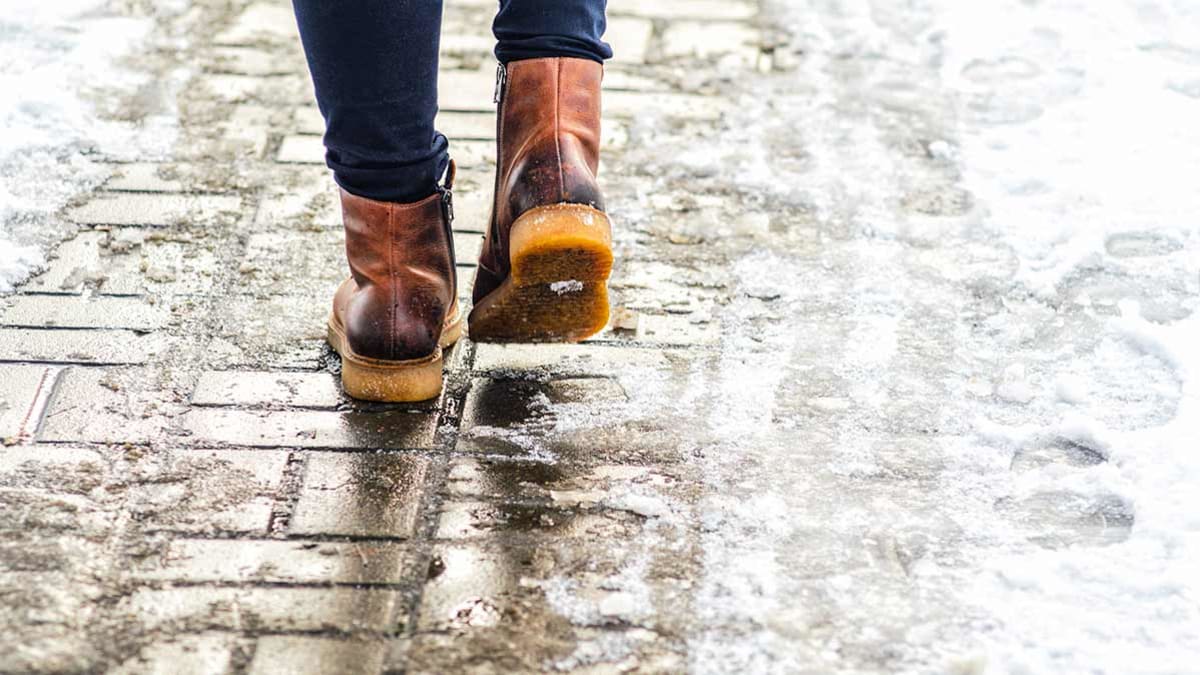Most ice melts are blends of the same ingredients: sodium chloride, calcium chloride, or magnesium chloride.
“They’re all salts,” says David P. Orr, director and senior engineer of the Cornell Local Roads Program. And any salt will seep into porous pavement, potentially causing problems.
We spoke with Orr, veterinarians, and our own in-house experts to derive the best technique for melting away ice while minimizing potential damage to concrete, driveways, and pets’ paws. Here’s what you need to know.
Mix it up. “Chlorides cause concrete to rust, crack, and deteriorate,” Orr says. He recommends mixing your ice melt with an abrasive such as sand, which reduces the amount of salt on your pavement and provides traction.
Lay it in layers. Always use a gentle hand when applying any type of ice melt to concrete. Lay down a thin layer before a storm, then another light layer during the storm. As the snow falls, the salt goes into solution and makes it easier to shovel or otherwise clear away the snow and ice. It’s not fairy dust that you can sprinkle on top of snow and have it magically disappear.
If the temperature is 15° F or warmer, regular rock salt should work as well as anything. In a lab, salt lowers the freezing point of water to temperatures as low as 5° F. But in the real world, temperature isn’t the only factor that dictates how effectively salt, or ice melt, will work. Environmental factors like ground temperature, wind, and accumulation—how quickly the snow is piling up—affect a snow melt’s effectiveness.
Below 15° F, opt for a salt blend. Look for a product containing calcium chloride, which can melt ice in temperatures as low as -25° F.
Take specialty claims with a grain of—ahem—salt. Some manufacturers tout their ice melts as “environmentally friendly” because they contain calcium magnesium acetate. CMA is sometimes used as a coating on rock salt. Manufacturers claim it’s less damaging than other ice melts, but practically speaking, it’s not: The coating melts off, leaving you with rock salt.
Scoop up salt and throw it away once the ice melts. Salt can harm a plant’s ability to soak up necessary nutrients. So you don’t want to shovel salty slush onto your lawn. But you also don’t want to leave it sitting on your driveway. Scoop up what’s left and trash it.
Be dubious of “pet-friendly” claims on ice melts. The expert we consulted couldn’t confirm that pet-safe ice melts are safer for pets (and they’re pricey, too). A better plan: Lead pets through a “rinse tray” after a walk. “Salt irritates dogs’ feet,” says retired veterinarian Robert Sharp of Hillsboro, Ohio. “It can cause burns and inflammation. Licking can worsen irritation.” He suggests a water-filled pan at the entry to your home, with a towel nearby. In consideration of your pets (and your floors), be sure not to track in salt yourself.
Source link
-
-
-
-
-
-
-
-
